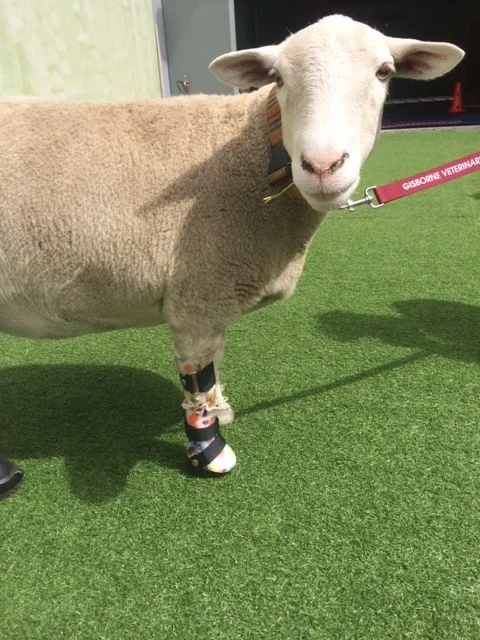Animal Prosthetic & ORthotic Devices
Keep up to date with our latest work by following us on Instagram, Facebook or view our Gallery page
Stifle Orthosis
Stifle Orthosis, knee brace, dog knee braces are most comonly designed to support and stabilise the knee joint. They can be used to control and stabilise many ailments:
· Cranial and caudal cruciate ligament injury
· Medial and lateral collateral ligament injury
· Patellar tendon avulsion
· Hyper-extension instability
· Genu varus / valgus
The stifle orthosis are commonly designed to provide support and stability to the Canine CCL (Cranial Cruciate ligament) tears. The stifle brace in the application of stabilising the CCL stops the cranial drawer movement of the Tibia in relation to the Femur. The stifle orthosis is designed to counteract this movement by the 4 point forces to apply an equal and opposite force. It also reduces rotation and medial/lateral instability.
Tarsus/Hock orthosis
The tarsal/hock orthosis can be used for a variety of pathologies:
· ‘Achilles tears’ Common Calcaneal Tendon tear or rupture
· Digital Flexor Tendon Injury
· Neuromuscular deficiencies
· Calcaneal ruptures
· Varus/Valgus deformity
· Hyperextension instability
· Medial/Lateral collateral ligament injury
A hock orthosis will cover the hock joint and extend aboce and below the joint. In mild cases the orthosis may not include a paw segment, leaving the paw free to contact the ground. In a more severe case it may be included to support under the paw and to reduce and distribute pressure.
The Orthosis can be made to completely immobilise the joint if required or allow controlled, limited or full range of the joint movement by the use of joints.
The design of the hock/tarsal orthosis includes the biomechanical control of the limb segments through 3 point force systems to reduce any unwanted movement or position.
Carpal Orthosis
The carpal orthosis is a device for the foreleg that can include paw segments and joints if required. The design and features of the device depends on the type and severity of injury.
Common uses:
· Carpal hyperextension instability
· Varus/Valgus deformity
· Medial/lateral collateral ligament injury
· Neurological positioning
· Post operative arthrodesis/ failed arthrodesis
· Non surgical candidates for arthrodesis
· Carpal pain
A Carpal orthosis will cover the carpal joint and extend above and below either side of the joint. The orthosis may include a paw segment in severe cases to provide more support and stability. In mild cases the orthosis can proximal to the paw, leaving it free to contact the ground.
The orthosis can be made to completely immobilise the joint if required or allow controlled, limited or full range of the joint movement by the use of joints.
The design of the carpal orthosis includes the biomechanical control of the limb segments through 3 point force systems to reduce any unwanted movement or position.
Fore Limb Prosthesis / Hind limb Prosthesis
A prosthesis( artificial limb) may be used for forelimb and hindlimb amputations or congenital limb deficiencies. For acquired amputations the whole limb does not always need to be amputated, just the concerned distal segment. The partial amputation of the limb improves the function of prosthetic use. The ideal length of the remaining residual limb length for prosthetic use is 3/4 of the limb remaining. This improves suspension of the prosthesis by having a greater surface area to distribute the pressure within the device and reduce the risk of skin break down.
Carpal amputations and below are the most successful and suitable for prosthetic fitting in the forelimb.
Pelvic (hindlimb) amputations at the hock and below are the most successful.
Temporary / Short term Device
Animal Tech can provide these short term rigid devices for pre or post operative management. These are fabricated on the same day as the appointment directly onto the animal's limb.
These devices have been great alternatives to standard rigid splinting for immobilisation as they contour the animal's anatomy reducing rubs and pressure sores. These can be moulded directly over dressings and bandages post operatively. The attachment of the Velcro straps allow for ease of don/doffing for dressing changes, hygiene and skin checks.
Typical applications include:
Post surgical immobilisation
Fracture immobilisation
Wound protection
Pre-surgical immobilisation and protection
Nerve damage requiring limb positioning
Stabilisation post cruciate repair








